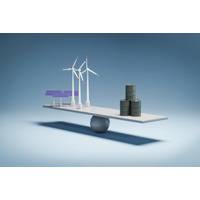Frost & Sullivan Optimistic About Indonesian Power Generation
Frost & Sullivan is optimistic on growth in Indonesia's heavy electric machinery in nuclear power generation. Due to Indonesia's residential, commercial, and industrial electricity consumption has grown at a robust pace, thus creating strong demand for electricity and consequently for the equipment used in electric power generation, transmission, and distribution.
Mr. K Vinod Cartic, Consultant, Frost & Sullivan, Asia Pacific said that increasing electricity demand has created opportunity for the nation to look beyond traditional power sources and also to focus on alternative energy resources. Further, as a vital part of energy value chain, which helps electricity grid generators to supply power to consumers, electric power transmission and distribution equipment will witness increased demand as the energy production increases in the country, he added.
He said that increase in electricity demand has also been driven by the growing economy and rapid urbanization of Indonesia's population.
He said that Indonesia's rapid economic growth has resulted in increase of power demand by 7 percent each year between 2007-2012, and even higher demand is anticipated in the future with an annual growth rate of 9.2 percent until 2019.
Mr. Cartic predicts that Indonesian power and distribution market is likely to grow at a CAGR of 12.3 percent between 2009-2016.
However, currently Indonesian energy mix is highly skewed towards oil, natural gas and coal, he added. According to research, the fossil fuels are diminishing day by day. The current reserves will face near extinction by the year 2050-60. The addition of Nuclear energy to the arsenal will help in diversifying the energy mix.
He said that nuclear energy is highly efficient to reduce total domestic energy consumption and electricity demand.
“Nuclear energy is clean and will reduce the emission of green-house gases in the atmosphere. It will reduce the contamination by sulphur oxides and nitrogen oxides by huge amount. It will also help in sustainable development over the years”, he said.
Mr. Vinod said that the nuclear renaissance, as it was termed, gained momentum until the Fukushima incident which dissuaded borderline countries from entering or maintaining nuclear capacity.
Nevertheless, the oil price is likely to increase in the long term and with it the relative cost of producing electricity with a high share of fossil-fuelled plants, he added.
He said that with renewables becoming competitive, but not yet able to provide the vast amount of electricity needed to sustain global growth, nuclear remains one of the cleanest and most reliable power sources available.
Beside that Mr. Cartic also predicts that coal usage is likely to grow significantly by 2015, as all the coal-fired power plants being built under the government's power infrastructure acceleration program are expected to be operational by 2015.
Given the current state of investment levels and the assumption of future investments, the usage of new energy alternatives and other renewable energy (RE) sources is expected to increase by 2020, he added.
He said that the primary reasons for this are the depletion of fossil fuels energy resources and the reduction in price of renewable energy in the years to come. Government support for renewables in the wake of the call for energy independence has a critical role to play in the development of green energy, he added.
Oil and gas usage is expected to reduce but remain in the list of top-three energy sources up to 2050. Coal is likely to be the primary source of energy in Indonesia up to 2050, he said.
He also said that nuclear energy as a source is at a debatable stage, due to the recent Japanese nuclear disaster. However, it is expected to provide for almost 3.5 percent of Indonesia's energy needs by 2050. “Nuclear power generation is still at a very nascent stage of development in Indonesia. It is expected that the companies playing a major role in transmission and distribution in Indonesia and globally would most likely be the major market participants in the nuclear energy sector”, he said.
He noted that nuclear power accounts for 12.3 percent of the electricity produced globally and this is expected to increase in the long term.
Mr. Cartic said that The Indonesian government has expressed interest in constructing its first nuclear power plant in West Kalimantan, citing the island large supplies of uranium and geologic stability, he added.
"Indonesian market is highly competitive, with both local and foreign participants and price remains one of the vital factors in purchasing power distribution equipment. Therefore the arrival of low-cost products from China has posed a significant challenge to established participants in pricing the products", he added.



